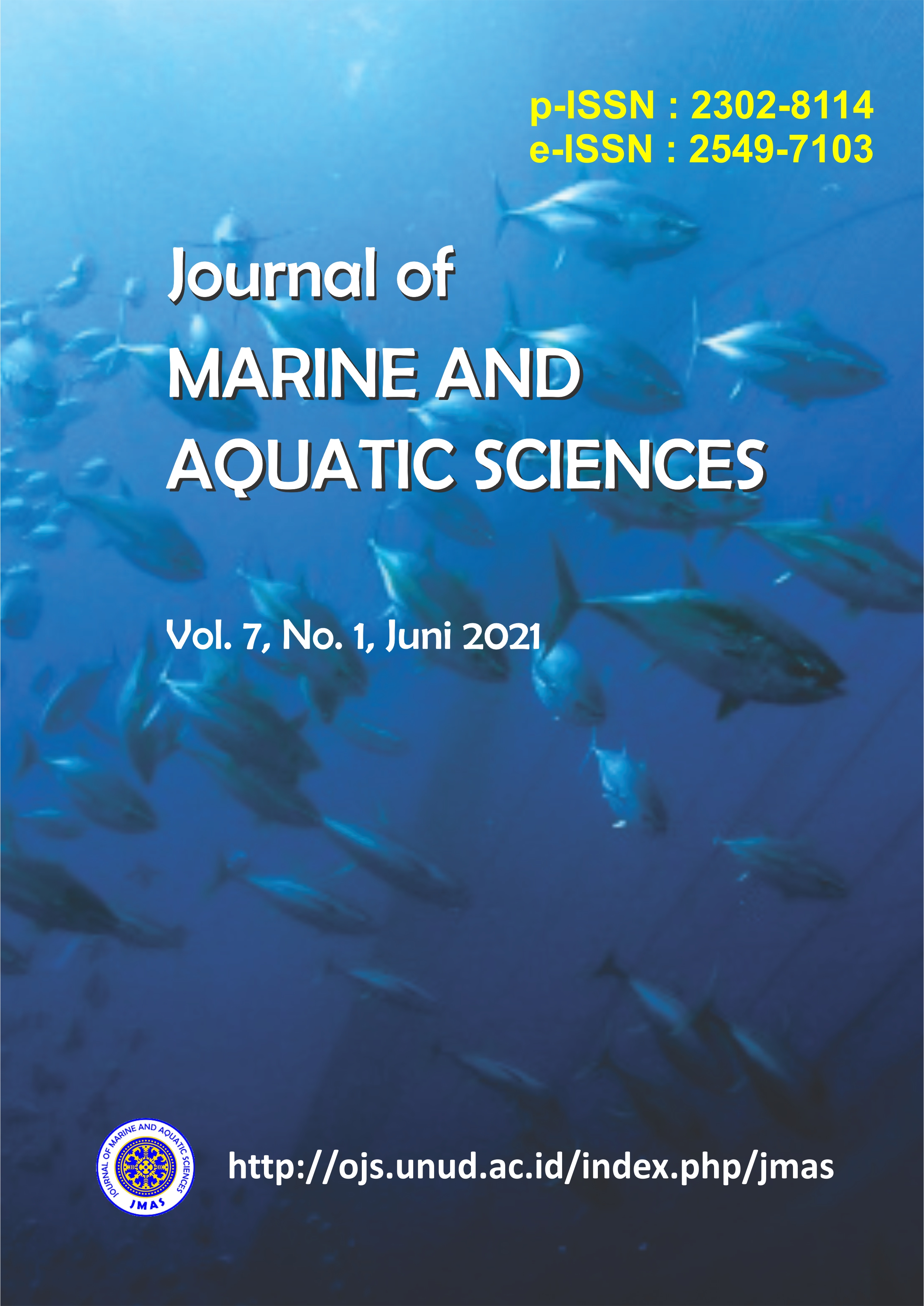Inventarisasi Keanekaragaman dan Komposisi Jenis Echinodermata di Perairan Pantai Segara Samuh, Bali
Abstract
Along with the development of tourism and the well-managed Nusa Dua area, local communities have the opportunity to be able to develop several beach tourism attractions, one of which is Segara Samuh Beach. One of the aquatic organisms that are generally affected by environmental changes is macrozoobenthos, especially the phylum Echinoderms. Based on this, it is necessary to conduct research on the composition of the species of Echinoderms and their distribution patterns. For this reason, it is necessary to conduct an inventory study of the types of echinoderms that exist in the waters of Segara Samuh Beach. This research will be conducted in the waters of Segara Samuh Beach (8° 47' 13.80'' South Latitude and 115° 13' 42.57'' East Longitude), North Kuta District, Badung Regency, Bali. The preliminary survey was carried out in April and data collection was carried out for 2 periods (May 2019 and August 2019). Sample inventory along with data processing and analysis was carried out at the Fisheries Laboratory, Faculty of Marine Affairs and Fisheries UNUD (Echinoderms sample). The largest species composition at Station I was sea cucumber (50%) and at Station II was dominated by snaking stars (54%). Stations III and IV have relatively the same or similar species composition (Figure 2). Subphylum Echinoidea is the species composition with the highest percentage, which are 78.79% and 80.95%, respectively. Other echinoderms found at these two stations were Asteroidea and Holothuroidea, 15.15% and 6.06%, respectively (Station III) and 14.29% and 4.76% (Station IV). Overall, the composition of the Echinoderm species consists mostly of the subphylum Echinoidea (47%), Ophiuroidea (47%), Asteroidea (7%), Holothuroidea (6%) and a little Crinoidea (1%).
Downloads

This work is licensed under a Creative Commons Attribution 3.0 International License.
Copyright 2012 - 2023 Journal of Marine and Aquatic Sciences (JMAS)
Published by Fakultas Kelautan dan Perikanan Universitas Udayana, Denpasar, Bali, Indonesia
JMAS (p-ISSN 2302-8114; e-ISSN 2549-7103)


